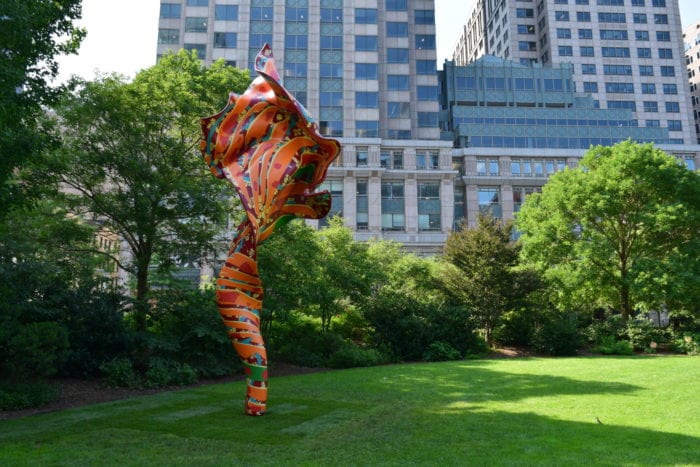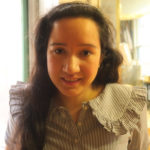
Panelists addressed the role of art in this unprecedented period.
Speakers identified the challenges and moments of inspiration strewn across the year for artists and arts organizations, during a webinar titled “Public Art in the Age of COVID.” Presented by the Greenway Conservancy, the talk was moderated by director and curator of public art for the Rose Kennedy Greenway Conservancy Lucas Cowan. Panelists included Kara Elliot Ortega, chief of arts and culture for the City of Boston, Che Anderson, deputy cultural development officer for the City of Worcester, and Leonie Bradbury, foster chair and distinguished curator-in-residence at the Emerson College School of the Arts.
Ortega reflected on the impact that the coronavirus had on the arts at its onset, explaining that the City still wanted very much to support artists during a crisis.
“It was such a fast moving time, just those first couple of weeks. It’s hard to think about challenges to our programs without thinking of what it was like to be a City arts office, in that moment,” said Ortega. “Everything flipped. Everyone we worked with, individual artists, cultural workers, creative workers, organizations, either were out of work entirely or closed. Right then and there, it was clear that this was something where we had to go look at what we normally do and throw that all out the window and figure out how to be responsive right there in the moment. We took all of the funding that we normally have… and we turned that into an artist relief fund.”
Cowan spoke to the importance of public art during the pandemic, explaining that when museums closed down, free public art was present for people when they needed it most. Other panelists described projects that emerged from out of the pandemic, as artists and curators had to reimagine how works would be displayed for their audiences. Anderson explained that in Worcester, the City organized a public art project called “Give Me a Sign,” where artists designed street signs with encouraging messages. Bradbury said that she hopes some of the innovation and creative problem solving that has come out of the pandemic will continue. In particular, art installations in window spaces and a drive in theater that showcased the work of digital artists stood out.
Anderson said that one cost artists and audiences have faced is the loss of the “festival” environment, the feeling of being around other people, enjoying a work, and having a conversation about it. Cowan said that he hopes there is a way that people will be able to recapture this experience.
“One of the things that’s been the greatest loss during all of this… is that feeling of community,” said Anderson. “…That loss of camaraderie, that loss of togetherness. …When I think about public art festivals, mural festivals, some of the sculpture festivals that happen around the Commonwealth, there’s just that feeling of walking through them and having a day with your friends and family. The ability to walk up to a piece of art and talk to a stranger about how you interpret it, or talk to the artists themselves about why they developed it.” He added, “There’s an inherent fear from people, right now, because I don’t think people want to get sick. But that’s where the arts come in. The arts are that glue that will bring people together.”
Shira Laucharoen is a reporter based in Boston. She currently serves as the assistant director of the Boston Institute for Nonprofit Journalism. In the past she has written for Sampan newspaper, The Somerville Times, Scout Magazine, Boston Magazine, and WBUR.

